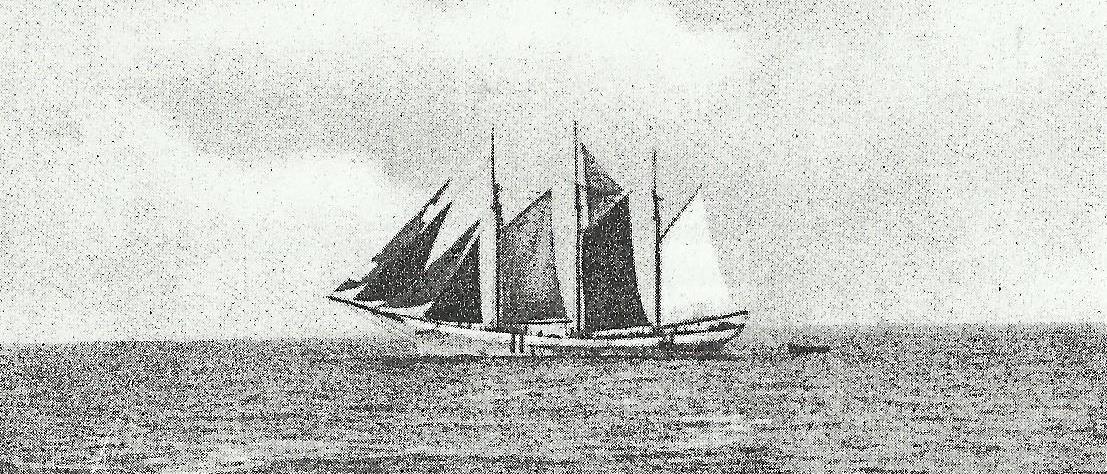Result
Your Country Needs You
During the First World War the British schooner fleet suffered heavy but sustainable losses, with over two hundred schooners and sailing ships being lost to enemy action, either from mines or U-boats attacks. When coming across these smaller vessels, U-boats would surface to attack them, either by machine gun fire, shelling or boarding the vessel and laying explosives, rather than using one of their precious torpedoes.
With losses mounting a plan was devised by the Admiralty to give these vessels greater protection, and to hit back at the enemy by turning them into ‘Q’ Ships. This meant firstly arming the vessels, and then disguising them to make them look like normal merchant ships. This would lure the U-boat to the surface to attack the vessel; the Q-ship would then quickly remove its disguise, open fire on the U-boat with her weaponry, and hopefully sink it.
RESULT was first called into service in 1917, being fitted out at Lowestoft Quayside ready for her first mission in February under the command of Lieutenant P. J. Mack, who had served with the Harwich destroyers and taken part in the Gallipoli landings, with Lieutenant George Mahlhauser RNR as second in command. Only volunteers were taken on Q-ships, and RESULT had a crew of 23. Only 5 men, the normal crew for a schooner, were on deck. These were the ‘panic party;’ when attacked they would abandon ship, making the enemy think they were a genuine fishing crew, with the rest of the crew hidden from sight below. RESULT was armed with two 12-pounder guns, one forward and one aft of the main mast, in gun-wells sunk into what had been the cargo hatches. The bulwarks on each side were cut and could be lowered when in action. She also had a 6 pounder gun on the port side, and two fixed 14 inch torpedo tubes aft, one on each quarter. To make space for the weapons her galley had been removed.

Flying the Dutch flag to further confuse the enemy, RESULT sighted a periscope on her starboard bow during her patrol. With the alarm raised one of the crew, engineman MacAlpine, dressed as a women in an attempt to lure the U-boat in further, passing himself off as the skipper’s wife! But the Germans stayed back and disappeared below the waves.
RESULT set sail again on 12 March 1917. A few days into her patrol she spotted a submarine 1½ miles away, which turned out to be British. The following day a U-boat was spotted astern; it opened fire, with shells dropping around RESULT. The ‘panic party’ then abandoned ship, and the submarine moved within 1,000 yards, but no closer. The rest of the crew lay low ready to use the guns; the U-boat fired a few shots at the panic party in the rowing boat before turning back to shell RESULT.
After 45 minutes of bombardment (and very little damage) Lieutenant Mack gave the order to open fire, with the bulwarks revealing their guns, and RESULT hoisted her white ensign. The U-boat was hit first time at the base of the coning tower whilst attempting to dive, and disappeared below the waves. A search of the area proved fruitless, the crew of RESULT being unsure whether or not the U-boat had been sunk. Later in the war a report of the incident by the U-boat Captain, obtained by the Royal Navy some months later, proved she had got away.
Making for the shelter of the coast RESULT ran into another U-boat; fire was returned on both sides, but the U-boat again escaped below the waves. RESULT headed to port for repairs; Lieutenant Mack and J. Reid (in the rowing boat) were both mentioned in despatches for their part in the action.
On her next patrol, on 5 April 1917, RESULT flew the Swedish flag under the name DAG. She sighted a U-boat periscope which continued to observe her from all sides for some time. The U-boat then disappeared for half an hour, but suddenly re-surfaced, opening fire, tearing a hole in the side of the hull at the waterline injuring two crew members. With the shelling getting ever more accurate and closer Lt Mack ordered RESULT to open fire.
The U-boat dived again but soon re-surfaced ready for a torpedo attack. RESULT was in a bad way; fire had broken out, the crew were desperately trying to plug the hole in her side, and with injured crew and little manoeuvrability left, it was decided to drop a depth charge. However at that moment H.M.S. HALCYON came out of the mist along with two patrol boats, and the U-boat made a quick exit.
During this action, and unbeknown to her, RESULT was being photographed, with a camera on top of the U-boat’s periscope. This blew her cover, as all enemy vessels would in future give her a wide berth. Her subsequent patrols were fruitless, and the Navy transferred her to the English Channel. She was then deemed unfit to serve due to her limited field of fire and lack of reserve buoyancy (her ballast was sand). She was removed from service in August 1917, returned to her original owners, and spent the rest of the war as a cargo carrier.
Where is she now?
RESULT is currently owned by The Ulster Folk and Transport Museum. She sits on dry land without her mast at the Museum in Cultra, County Down.
Sources
Tim Latham (1991) The Ashburner Schooners: The story of the first shipbuilders of Barrow-in-Furness. Ready Rhino Publications: Manchester, 119.
G.H.P Muhlhauser LT. RNR (1920) Small Craft. John Lane, Bodley Head, London, 132.
